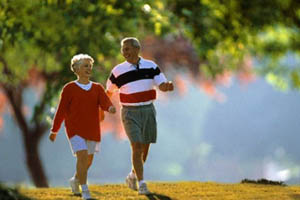 No one is too old (or too young) for yoga. As life expectancies grow, more and more seniors are doing what they can to maintain and improve their sense of health and wellness. In fact, many of the 36 million or so Americans who are 65 or older are turning to yoga to keep them agile and in shape.
No one is too old (or too young) for yoga. As life expectancies grow, more and more seniors are doing what they can to maintain and improve their sense of health and wellness. In fact, many of the 36 million or so Americans who are 65 or older are turning to yoga to keep them agile and in shape.
Here is what you need to know about yoga for seniors:
Benefits
Yoga is so well-suited for seniors because it is a low-impact form of exercise. Risk of injury is very low because the discipline does not require any contact with anyone or anything. In addition, yoga’s weight-bearing postures help build or maintain lean muscle mass, and its focus on balance develops coordination. Both of these attributes are necessary in reducing the risk of age-related falls, accidents or bone fractures.
Yoga also helps combat many of the health conditions that come with age, like high blood pressure, arthritis and incontinence, as it keeps the body toned, strong and flexible.
Yoga classes for seniors also provide a sense of community. As many elders no longer have their spouses or they live in single-dwelling arrangements, the group setting of a yoga class offers seniors a way to connect and socialize with others.
Poses
There are many yoga postures that can be safely performed by seniors. Such postures have both a restorative and therapeutic benefit to them. Adaptations and adjustments should be made according to the person’s health status and their physical ability.
Here are a few yoga postures for seniors:
Easy Pose (Sukhasana): The simple act of sitting down and breathing deeply and fully has an enormous capacity to tone the cardiovascular and pulmonary systems while also lengthening the spine, resting the mind and cultivating a sense of peace. The beginner can do this posture for a minimum of 10 breaths and gradually work their to staying in this posture for five to 10 minutes.
Cat Pose (Bidalasana): This grounding posture helps tone the arm muscles while also strengthening the core and alleviating tightness in the low and upper back and neck. The beginner can do this posture for a minimum of five breath cycles and gradually work their way to doing more.
Cautions
Older adults should get clearance from their doctor before starting a yoga practice. This is especially relevant for those who take medications or have a prior or current history of cardiovascular or pulmonary conditions. In addition, individuals should also seek out classes specifically designed for seniors, as they will take into account the unique health issues affecting them.
Also read:

